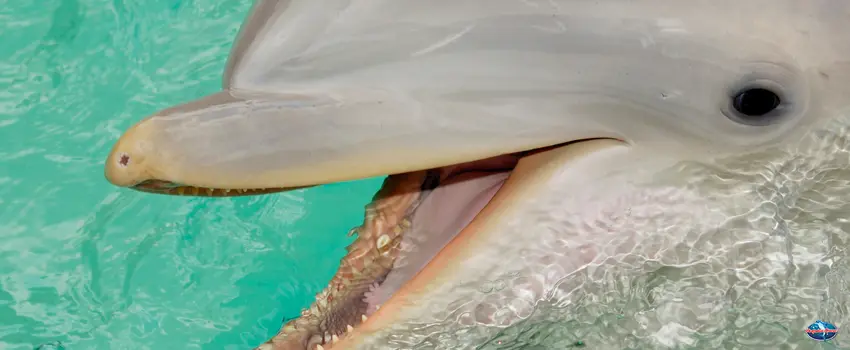The life cycle of bottlenose dolphins is as intricate as it is interesting. From gestation to birth, dolphin reproduction consists of several fascinating stages. Life in the cruel, unforgiving ocean makes breeding a challenge, but bottlenose dolphins find a way.
Baby bottlenose dolphins are called “calves.” Seeing one in the wild with its mother can be a memorable moment. Learning how bottlenose dolphins raise their young can build an appreciation for the species that can enrich a sighting.
The Birds and the Dolphins
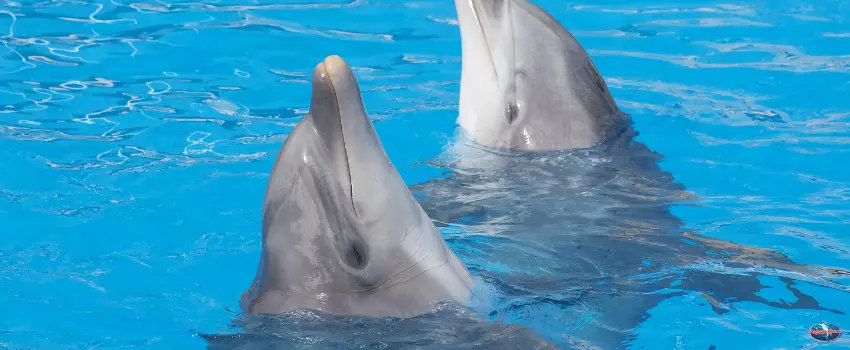
A female bottlenose dolphin ovulates up to seven times per year. This cycle can last for up to a month, meaning mating and pregnancy can occur at any point during this window. Furthermore, bottlenose dolphins aren’t limited to one mate. Rather, in a pod, females mate with several males. With the absence of a dolphin Maury, learning the identity of the father can prove difficult.
The mating process for the female dolphin can be brutal. Rather than delivering flowers and going out for a meal, the male dolphin will often work in tandem with other male dolphins to keep a female in captivity. As soon as displays of affection are over, if a female decides to leave, males will often slap, bite or slam into her to keep her from leaving.
A female dolphin’s first calf is born between the ages of six and 13 years of age. This is due in part to how dolphins are considered mature. Maturity is reached when a female dolphin grows to over 90 percent of her adult size, which can take up to 13 years. A male dolphin takes longer to mature, taking up to 15 years. Unlike humans, menopause does not occur for a dolphin. The oldest recorded dolphin birth was recorded in a female 48 years old in a population near Sarasota, Florida.
Time in the Womb
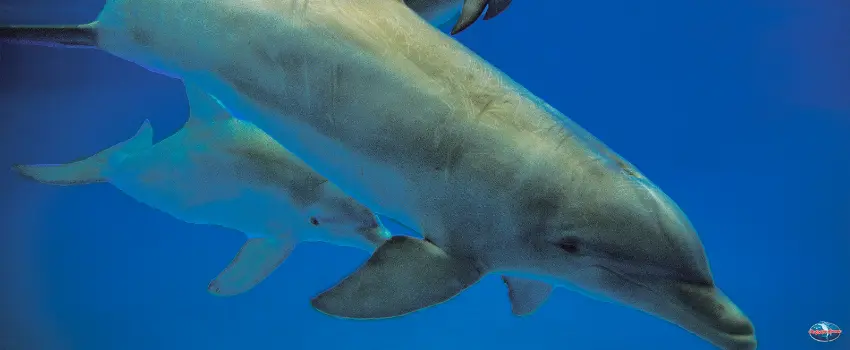
Human mothers will carry a baby for up to nine months in the womb. The bottlenose dolphin’s gestation period is 12 months. Bottlenose dolphin habitat ranges around the globe, from cool waters to warm with all manner of limitations and dangers. In the womb, a baby dolphin is safe, albeit very snug. There isn’t much room in the uterus for a baby to develop. This means that the calf’s developing dorsal fin and tail fluke are folded during development.
The mother will increase her food intake twofold as the calf develops. Rather than developing a pregnancy bulge like a human, the dolphin will add girth. Off the coast of Florida, dolphin birth happens during the spring and summer months when the waters are warmer. In early Autumn, a smaller number of dolphins are born. Off the coast of California, dolphin birth happens in the fall.
While dolphins are rather promiscuous, on average, a female dolphin rears a calf once every three years. As dolphin reproduction includes time in the womb and rearing outside the womb, this time frame can vary. The bottlenose dolphin’s lifespan stretches at least 40 years but has been seen in female dolphins up to 60. This means, in a dolphin’s lifetime, a single female has the potential to birth over ten calves.
Raising a Calf
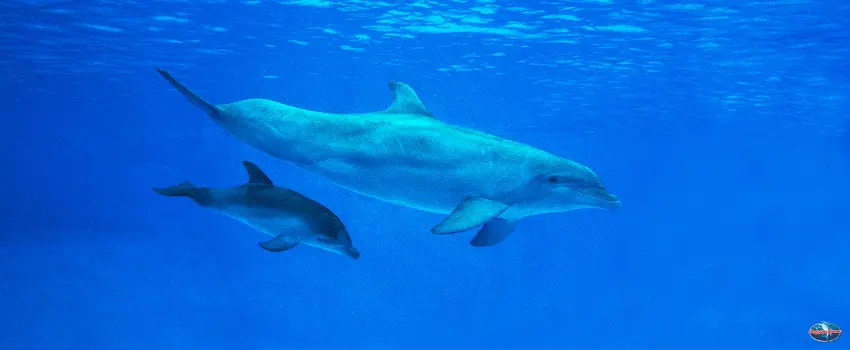
A mother’s duty is not over when the calf is born. Rather, it has just begun. The bottlenose dolphin family consists of the mother and the calf, with the pod sometimes assuming roles in the rearing of the newborn.
During birth, the calf typically arrives tail-first. The umbilical cord will break away on its own. Like human midwives, a dolphin mother can choose to have an “auntie” nearby, though this is not limited to females. This dolphin can assist the mother in the birth, should the need arise.
A newborn dolphin can stretch up to almost four feet in length and weigh up to 44 lbs.! With its incredible size, it’s a wonder that female dolphins aren’t ripped asunder by the girth of their child. A newborn calf will display stripes, have darker skin, and look rather silly attempting to swim alongside its mother for the first week or so.
Nursing happens within the first week, with a calf suckling at its mother’s teats four times per hour. Nursing can continue for up to two years, though the longest period of nursing ever recorded was seven.
To keep up with the pod, the calf will travel close to the mother in what is known as the “slipstream,” which is created by moving through the water. In this way, the calf learns to swim fast and efficiently.
A Bit of Independence
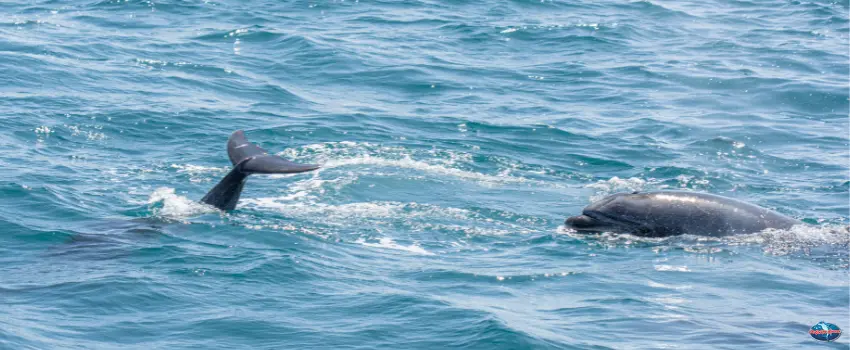
As the calf grows older, it becomes more independent of its mother. This begins with taking in solid food rather than the mother’s milk. At around three to four months of age, the calf will develop teeth and can begin chewing on fish. At this time, the calf begins developing a distinct sound as well.
As human babies desire to make strange, jarring noises, so too does the calf. An adult dolphin is the owner of a unique range of vocal noises. Calves begin life with simple sounds, but as they age, their voice becomes unique as well.
This signature sound helps differentiate them between dolphins of the same pod. Further, the mother and calf will have formed a bond that is strengthened through vocalizing. A calf can stay with its mother for up to six years in the wild, though that time is shorter in captivity. This is due to a lack of predators and a regular source of food, whereas in the wild, the dolphins must work together to secure both.
Mothers and Their Children
Dolphins are as cute as they come for ocean-dwelling creatures. Nothing is cuter than seeing a mother and her newborn calf swimming freely. Though they may appear at peace in their natural habitat, rearing a baby is hard work for all involved. Having the opportunity to spot a baby dolphin is a unique experience afforded to those aboard the Dolphin Quest. Departing daily from St. Petersburg, Florida, our eco-educational tours have been known to find mother and calf pairs. For more information, visit www.boattoursjohnspass.com.


